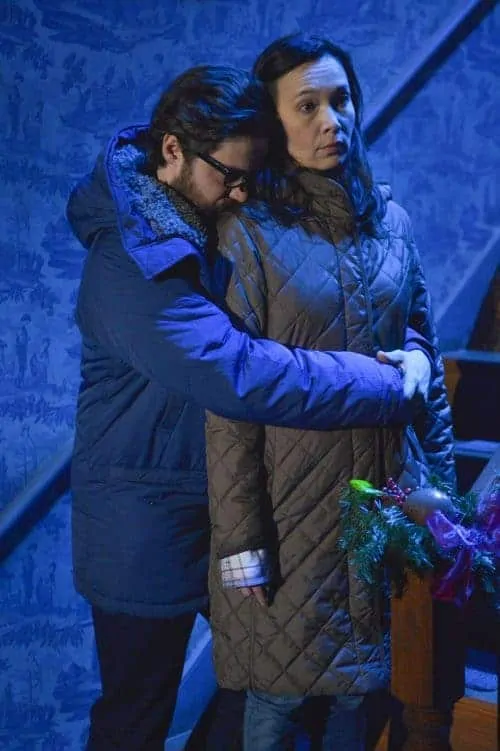The American Conservatory Theater’s newest offering, John, is almost a ghost story. Creepy dolls, spooky stories, battlefield lore, flickering lights, and temperamental rooms all feature, but the story stays within the natural (no “super”). That’s not a bad thing: there are plenty of good shows about crumbling relationships. Pulitzer Prize-winning playwright Annie Baker ought to be able to write one. She is brilliant and observant, with a sensitive ear for realistic dialogue. She has used these talents to write a play that is totally devoid of dramatic interest.
Silence is a powerful tool in the theater, if used sparingly.
John contains four fascinating, complex characters. Mertis (Georgia Engel) is a quirky bed-and-breakfast owner with too many tchotchkes and morbid eloquence. She gets the best lines, from her deadpan introduction of the portrait in the breakfast nook (“that’s Eugenia”) to comparing her (ex-)husbands to a woodchuck and a prehistoric fish. Her blind best friend Genevieve (Ann McDonough) has an equally outsized personality. The highlight of the show comes when she postpones intermission to deliver an exuberant, fourth-wall-breaking monologue about going clinically insane.

The young couple, Elias (Joe Paulik) and Jenny (Stacey Yen), have the sort of rocky relationship it hurts to watch. Elias cruelly turns all of Jenny’s attempts to connect into aggressive confrontations. Jenny is the nice one—personable, sweet, and full of interesting facts—but, we learn, a pathological liar. From the show’s first few minutes (and at regular intervals thereafter), I found myself with my face in my palms wishing they would please just break up already.
Annie Baker and director Ken Rus Schmoll are nothing if not brave. A conversation takes place entirely offstage, heard (unfortunately not very clearly) but not seen by the audience. Characters stumble their way through sentences full of “like”s, “um”s, and false starts. Uncomfortably long pauses punctuate the dialogue. The play’s motif is being watched. There’s plenty of opportunity here for watching unimpeded by talking. Characters grimly stare at each other and at their surroundings, and we (the audience) mutely look on.
Silence is a powerful tool in the theater, if used sparingly. At the beginning of John, some of the best moments of comedy are wordless. Jenny’s abject horror as she recognizes one of Mertis’s dolls is priceless, and Mertis’s manual movement of the hands of her grandfather clock (to mark the passage of time) provokes chuckles. But the show drags on for over three hours without ever picking up the pace.
I go to the theatre for experiences that transcend the ordinary. There are many ways to achieve this: witty dialogue, heightened emotions, compact action, or simple bizarreness. John is too naturalistic in its plot and dialogue to make use of any of those tactics. It’s all very realistic—and very boring.



